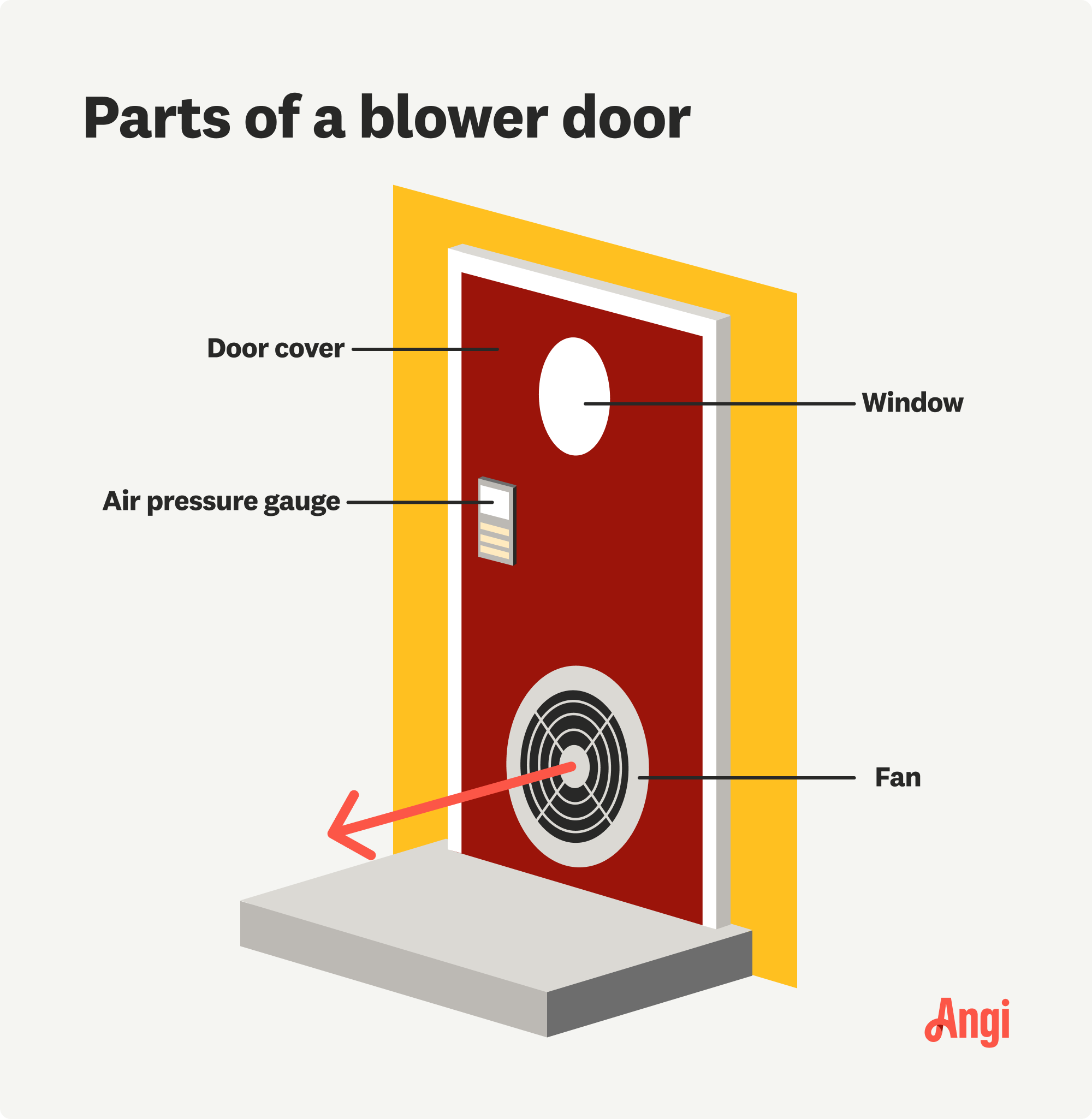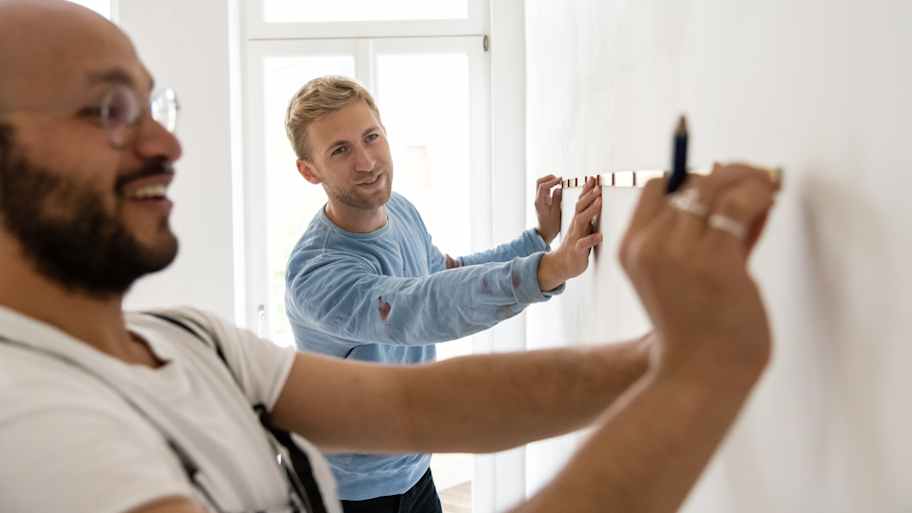
If the motorized damper in your AC unit goes kaput, you need to replace it. Here is how much you can expect to pay to get this job done.
Expect a blower door test to cost an average of $325, based primarily on the type of home.


A blower door test costs anywhere from $200 to $600 and is used to suss out leaks.
Performing one of these tests on a single-family home costs an average of $350, while duplexes cost an average of $600.
A good air change per hour (ACH) test score is less than 2ACH.
Most new homes are required by law to complete a blower test, but the same isn't true of pre-existing structures.
Popular add-ons when getting this test include a home energy audit, duct sealing, and applying weather stripping to doors.
A blower door test costs around $325 on average, but you might pay between $200 and $450, depending on a few different factors. This test is a great way to know whether your home is leaking precious heat or air conditioning, and the results can help you pinpoint those leaks and seal them. In this guide, we’ll discuss blower door test costs and some cost factors that can influence your total.

While certified blower door testers typically charge flat rates per home, the type of home can influence the cost. Not only will homes with multiple units require additional blowers, but the labor time to install them will increase as well.
| Home Type | Cost |
|---|---|
| Single-family | $200–$450 |
| Duplex | $400–$800 |
| Apartment or multi-family | $600+ |
Expect to pay somewhere within the range of $200 to $450 if you have a standard one-story or two-story home.
This scenario requires the least amount of work for your professional. They’ll only have a single door to install a blower fan on, although they’ll also have to do the following to set up a “closed home” situation:
Close and lock all exterior doors
Close and lock all windows
Open all interior doors
Turn gas appliances to “pilot”
Close vents and HVAC dampers
If you have a duplex, your blower door test will typically range from $400 to $800.
Blower door tests cost more for duplexes because they require more work from your professional. Not only will they have to go through two units to shut exterior doors and windows and close exterior vents, but they’ll also need to install two separate blower fans and monitor both throughout the test. After the testing is completed, they’ll also spend more time writing up two reports.
If you have a multi-unit property, you’ll likely need to get a custom quote, but the cost will likely push over $800 and could reach into the thousands.
Basically, the more apartments or units you have in your building, the more time your professional will have to spend going through and preparing each space. Each unit will also likely require a separate blower fan installed, which adds to the labor time for installation and monitoring.
On average, expect to spend between $250 and $350 per unit for multi-family homes and apartment buildings.

A blower door test is highly valuable because it will identify where your home's air is escaping from. Once you know the location of air leaks, you can fix the problem and save money in all that wasted energy.
The average cost for a blower door test is around $325, though it may range between $200 and $450. It might seem unnecessary to spend this much on a diagnostic rather than putting that money toward sealing the air leaks in ducts and around wall openings, but a blower door test can help you find where your money will go the furthest and can determine if you have an issue in the first place. Ultimately, paying for a blower door test can often end up saving you money on sealing costs and heating and cooling costs.
The cost of a blower door test covers the actual testing process that involves fitting a door with a powerful fan to suck air out of your house as a way to gauge differences in air pressure. In addition, local energy audit companies provide detailed reports of their findings. Lastly, your report may include some pricing options for sealing or caulking sources of air leaks in your home.
You might see DIY blower door test tips online, but this is a job best left to a professional. You’d very likely have a hard time recreating the high-powered diagnostic tools pros use, so your results won’t be accurate. Plus, investing in or renting the equipment will cost far more than it would to hire a professional air conditioning pro near you, so you’ll end up spending less in the long run if you just hire an expert.
Additionally, it’s challenging to read and understand the results of a DIY blower door test, so even if you did have access to the equipment, it’s best to hire a pro to ensure you get accurate answers regarding your home’s efficiency. This is especially true if leaks are occurring around hidden ductwork that you can’t visually inspect. A professional will be able to locate these leaks following a test and help you seal them, which can improve performance and reduce the risk of condensation forming on the ducts.
Blower door testing should also be performed by certified energy auditors with Building Performance Institutes (BPI) and Duct Leakage (IDL) certifications. Energy efficiency programs that provide rebates and incentives won't recognize results that don't come from BPI-certified contractors, so, again, it pays to hire a pro in this case.
There are a few other small projects you may want to consider adding on during or after your blower door test, including:
A home energy audit, which costs $200 to $700 on average, to understand your home’s energy-efficiency.
Door weather stripping, which costs $130 to $430 per door. Weather Stripping can help create a tight seal around your door, preventing air loss.
Window caulking, which costs $50 to $70 per window. Similar to weather stripping, caulking helps seal windows.
Checking air ducts for leaks or sealing your ducts, which costs an average of $350 and $2,250, respectively.
Thermal imaging, which costs $150 and $400. This is included in some blower tests and helps determine exactly where the leaks originate. It also locates sites of other thermal issues.
Unfortunately, a blower test is not a project where you can save large amounts of money. The doors themselves are only produced by a few companies, and there isn’t much you can do to reduce labor hours.
If you’re looking to save a bit, you need to get a little creative. Try the following:
Ask for referral bonuses or discounts.
Schedule during the off-season or in a quiet period of your pro’s schedule.
Look for home energy efficiency rebates from your state or city.
DIY fix any leaks before the test.
Home is the most important place on earth, which is why Angi has helped more than 150 million homeowners transform their houses into homes they adore. To help homeowners with their next project, Angi provides readers with the most accurate cost data and upholds strict editorial standards. We extensively research project costs to develop the pricing data you see, so you can make the best decisions for you and your home. We rely on reputable sources, including the U.S. Bureau of Labor Statistics, academic journals, market studies, and interviews with industry experts—all to ensure our prices reflect real-world projects.
Want to help us improve our cost data? Send us a recent project quote to [email protected]. Quotes and personal information will not be shared publicly.
From average costs to expert advice, get all the answers you need to get your job done.

If the motorized damper in your AC unit goes kaput, you need to replace it. Here is how much you can expect to pay to get this job done.

Whether your energy bills are out of control or you can’t keep your home comfortable, it’s good to know what costs to expect before you pay to insulate your ductwork.

Discover the true duct replacement cost for your home. Learn about average prices, key cost factors, and tips to save on your ductwork replacement project.

Understanding how to calculate CFM in your home can help you determine how much airflow you need to regulate temperature and maximize HVAC efficiency.

Cooling your home in hot, dry climates can be a challenge. How do you keep your home cool? Learn whether an evaporative versus swamp cooler is your best option.

Discover the true ductless heat pump cost for your home. Learn about installation, factors affecting price, and ways to save in this comprehensive cost guide.